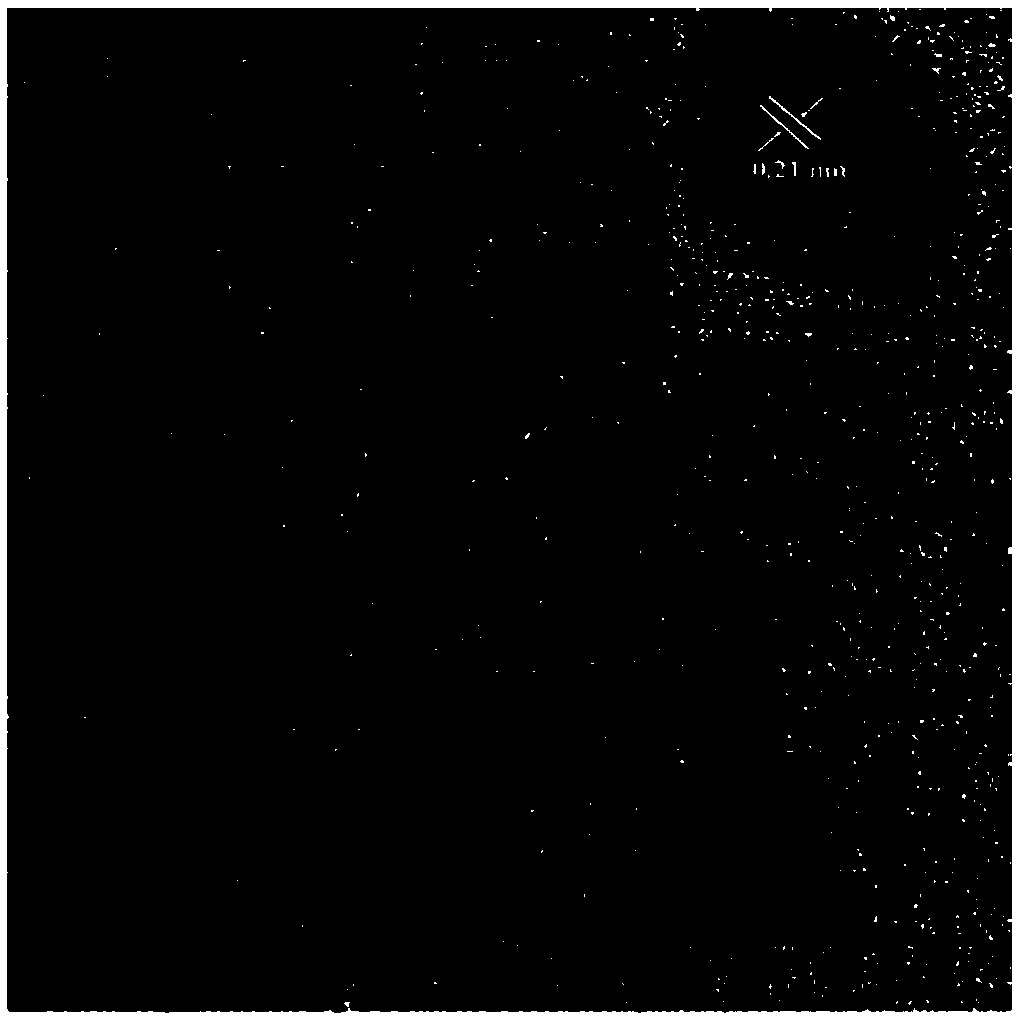Preparation method of double-emission carbon-based nano probe and product of preparation method
A carbon-based nano, dual-emission technology, applied in nanotechnology, nanotechnology, nano-optics and other directions, can solve problems such as uncontrollable, complex process, decreased quantum efficiency, etc., to achieve improved sensitivity, simple preparation method, and product particle size. uniform effect
- Summary
- Abstract
- Description
- Claims
- Application Information
AI Technical Summary
Problems solved by technology
Method used
Image
Examples
Embodiment 1
[0065] Weigh 1g of citric acid and 2g of urea and dissolve them in 20mL of N,N-dimethylformamide (DMF), transfer the prepared solution to a reaction kettle, and heat at 200°C for 8h to obtain a black viscous solution; Add 40mL sodium hydroxide solution (50mg / mL) to the mixed solution, then remove the supernatant by centrifugation (16000r / min, 10min), collect the precipitate and dissolve it in dilute hydrochloric acid solution (50mL, 5%), after stirring for 10min, pass Centrifuge (16000r / min, 10min) to remove the supernatant, collect the precipitate, dissolve it in deionized water, centrifuge (16000r / min, 10min) twice to remove the precipitate, collect the supernatant, freeze-dry at -35°C for 72h , to obtain red fluorescent carbon dots. The product was redispersed in water, and its transmission electron microscope picture was as follows figure 1 As shown, the particle size of the product is uniform, 3-5nm, and has good dispersibility.
[0066] Weigh 1 g of citric acid and 0.8...
Embodiment 2
[0070] Weigh 0.6g of p-phenylenediamine and 2g of urea and dissolve them in 20mL of N,N-dimethylformamide (DMF), transfer the prepared solution to a reaction kettle, and heat at 200°C for 8 hours to obtain a black viscous solution; add 40mL potassium hydroxide solution (50mg / mL) to the mixture, then remove the supernatant by centrifugation (16000r / min, 10min), collect the precipitate and dissolve it in dilute nitric acid solution (50mL, 5%), and stir for 10min Finally, remove the supernatant by centrifugation (16000r / min, 10min), collect the precipitate, dissolve it in deionized water, and centrifuge (16000r / min, 10min) twice to remove the precipitate, collect the supernatant, and store at -50°C Freeze-dry for 45 hours to obtain red fluorescent carbon dots.
[0071] Weigh 1 g of glucose and 0.5 g of urea and dissolve them in 10 mL of deionized water, transfer the solution to a reaction kettle, and heat at a constant temperature of 120 °C for 8 h to obtain a blue transparent so...
Embodiment 3
[0074] Weigh 0.5g of o-phenylenediamine and 2g of ethylenediamine and dissolve in 20mL of dimethyl sulfoxide (DMSO), transfer the prepared solution to a reaction kettle, and heat at 200°C for 8 hours to obtain a black viscous solution; Add 40mL sodium hydroxide solution (50mg / mL) to the mixture, then remove the supernatant by centrifugation (16000r / min, 10min), collect the precipitate and dissolve it in dilute hydrochloric acid solution (50mL, 5%), after stirring for 10min, Remove the supernatant by centrifugation (16000r / min, 10min), collect the precipitate, dissolve it in deionized water, centrifuge (16000r / min, 10min) twice to remove the precipitate, collect the supernatant and dry it in vacuum to obtain red fluorescent carbon point.
[0075] Weigh 1 g of fructose and 0.5 g of urea and dissolve in 10 mL of deionized water, transfer the solution to a reaction kettle, and heat at a constant temperature of 120 °C for 8 h to obtain a blue-green transparent solution. The mixed ...
PUM
 Login to View More
Login to View More Abstract
Description
Claims
Application Information
 Login to View More
Login to View More - R&D
- Intellectual Property
- Life Sciences
- Materials
- Tech Scout
- Unparalleled Data Quality
- Higher Quality Content
- 60% Fewer Hallucinations
Browse by: Latest US Patents, China's latest patents, Technical Efficacy Thesaurus, Application Domain, Technology Topic, Popular Technical Reports.
© 2025 PatSnap. All rights reserved.Legal|Privacy policy|Modern Slavery Act Transparency Statement|Sitemap|About US| Contact US: help@patsnap.com



